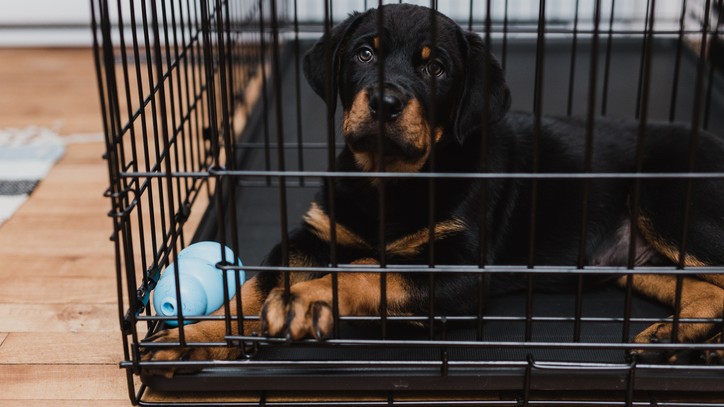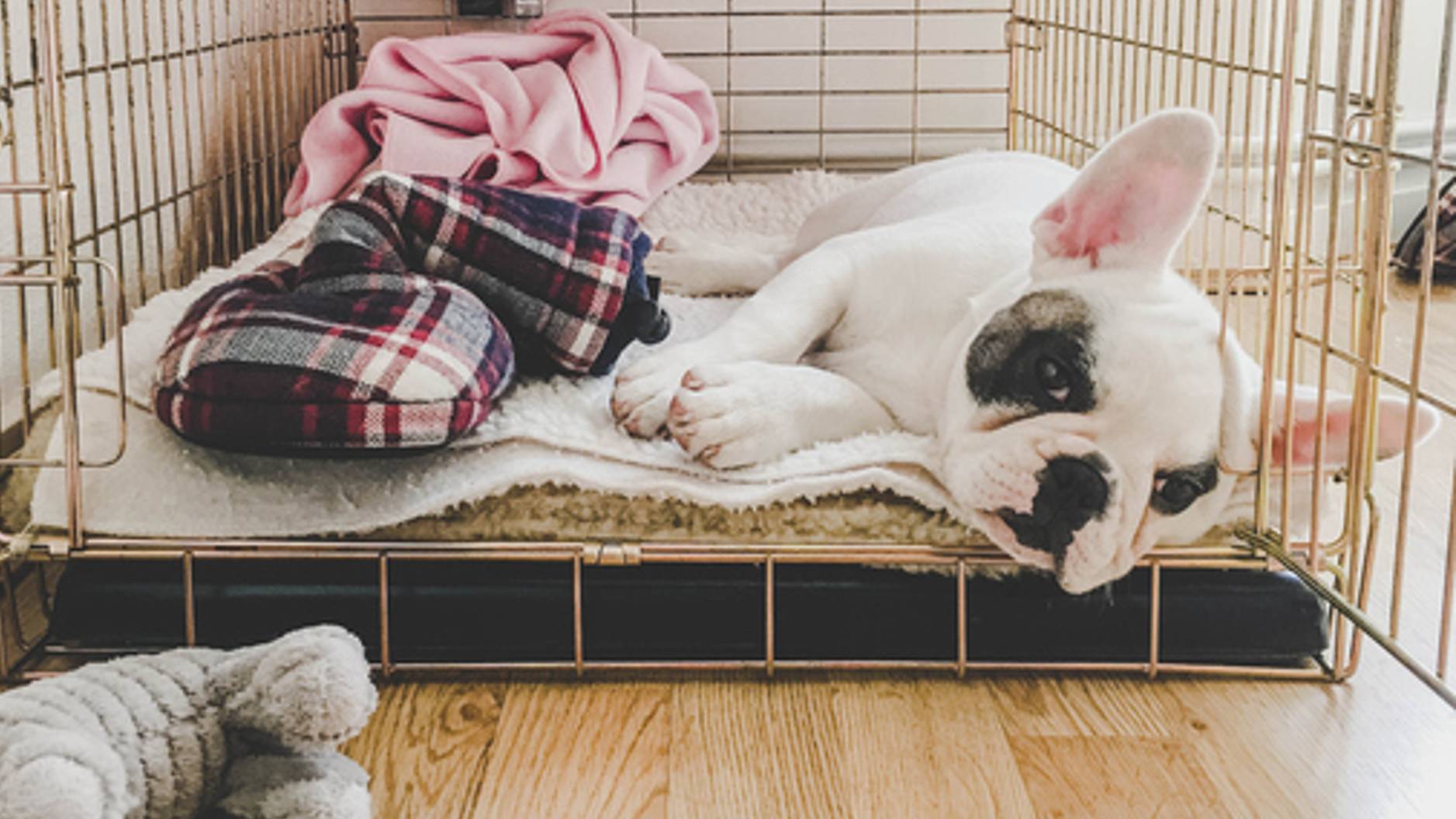How to make a dog crate escape-proof
If you’d like to find out how to make a dog crate escape-proof, we’ve got the answers here

While many owners dislike the idea of putting their pets in crates, it’s really an essential part of a dog’s education. Dogs instinctively seek out ‘dens’ where they can feel secure and protected and will quickly learn that crates are their safe space. They’re also useful for crate training, potty training an older dog and curbing destructive chewing as well as essential if you plan to travel with your pet.
Crates can also help your dog adjust to new environments – if you move house with an older dog, his crate will remain a familiar fixed point in unknown surroundings. From time to time though, your dog might try to stage a bid for freedom – here’s how to make a dog crate escape-proof.
- Best dog crates: Keep your pup safe and secure
Why do dogs try to escape their crates?
The first thing to consider when making a dog crate escape-proof is why your dog is trying to get out in the first place. Most dogs are content in their crates and if the door is left open will often retreat to them when they want some alone time.
If your dog frequently barges past you as you shut the door or tries to escape from the locked crate, he could be scared or anxious of being shut in. In that case, you may need to go back to beginning and help him re-acclimatize to the crate – our article on separation anxiety has some great tips on this.
Although crates are a very useful training tool, you should never leave your pet shut up by himself for hours. Dogs are sociable creatures and most will fret if deprived of company for too long. Make sure your pooch has plenty of walks and playtime throughout the day before putting him in his crate for some down time.
How to stop your dog from chewing their crate
If your dog obsessively chews his crate then he’s probably either bored, teething (if he’s very young), or anxious. If he’s teething then he should grow out of the chewing stage – providing teething-specific, safe chew toys will help.
You could also try wetting an old dish cloth, twisting it into a rope and freezing it – many teething dogs like a frozen toy as it helps to reduce the pain of sore gums. If he’s bored then the obvious answer is to give him more entertainment!
Get the best advice, tips and top tech for your beloved Pets
If possible, give him more exercise – if you’re out for long periods of time, ask a friend or neighbor to come in. You could also try leaving the radio on for company.
How to create a suitable dog crate
When choosing the best dog crate, it needs to be a suitable size and construction for your dog. Anything that’s not purpose made or is old, rusty or flimsy will not be escape proof! Dog crates that have been stored outside may have deteriorated past the point of safety, so if you’re borrowing or buying a second hand one then check it carefully before use.
If you want your dog to love spending time in his crate, you’ll need to make it a space that is safe, comfortable, and fun to be in. That means providing a comfortable dog bed, placing the crate in a quiet area of the house, and offering toys or treats for your dog to work on while he’s in the crate so he has something fun to keep him busy.
Puzzle toys or long lasting treats are a great option to keep your dog mentally stimulated and rewarded while in the crate.

How to make your dog crate escape-proof
1. Pick a sturdy crate
If your crate is relatively new, sturdy and appropriate for your dog, it should be fairly escape proof already. Solid, permanent crates will be much stronger than the wire type which fold up for storage – the latter may be convenient but they are also less sturdy.
2. Reinforce the crate
If you have a wire crate, you can reinforce it by adding zip ties to the top and bottom of each of the four corners. Attach the ties from the outside and cut the ends so there’s nothing for your dog to get hold of. You can reinforce the floor by drilling holes in each corner of the plastic tray and using zip ties to attach it to the walls. If you need to fold the crate up, you can always cut the zip ties!
3. Secure the latch
If you often arrive home to find your dog happily skipping round the kitchen, then he could be letting himself out of his crate. Dogs can be very intelligent and can learn to work a hastily-secured latch – even from inside the crate!
If he’s a bit of a Harry Houdini, make sure you always push the latch in firmly. You could also use a length of chain and a clip for extra security. A short chain is better than a long one, as if your pet does manage to flip the latch a long chain may allow him enough wriggle room to slither through.
It’s not a good idea to put a padlock on a crate in case you have to get your dog out in a hurry, though – and there’s always a risk you might lose the key!
Your dog may also have worked out how to lift the door off its hinges, so reinforce these if necessary with zip ties.

5. Crate training
The very best way to make sure your dog doesn’t escape from his crate is to teach him to be happy and comfortable in it through gentle, firm, regular training. If your dog is still trying to escape, consult your training professional or veterinarian for further advice.
One weak point is the door and latch. Most dogs who escape from crates will do so by running past you as you try to fasten them in. This is a behavioral issue and will need to be addressed by training – either your pet really doesn’t want to be in his crate, or he just thinks that what you’re doing is more interesting and wants to play!
If he’s just being cheeky then you could try enticing him in with a nice chewy treat to keep him occupied while you secure the door. Put him in often for short periods until he learns his routine.
Sara is a freelance journalist and copywriter of many years’ experience with a lifelong love of animals. She’s written for a range of magazines and websites on subjects varying from pet care to travel. A horse rider since the age of five, she’s currently a full time pet slave to horse Blue and gorgeous, goofy English Springer Spaniel Olly. Adorable Olly has a huge sense of adventure and no sense of direction, keeping Sara on her toes.

